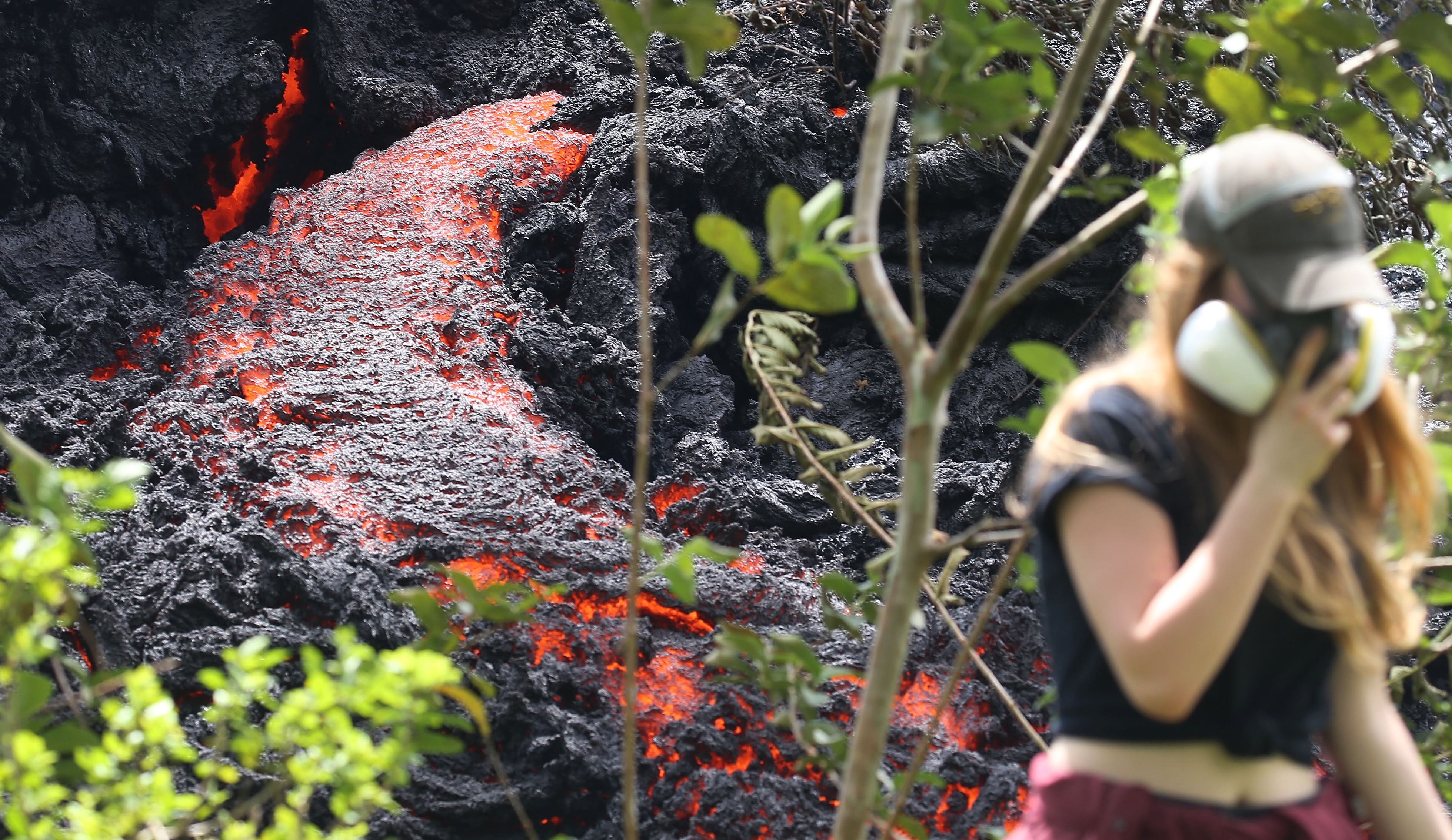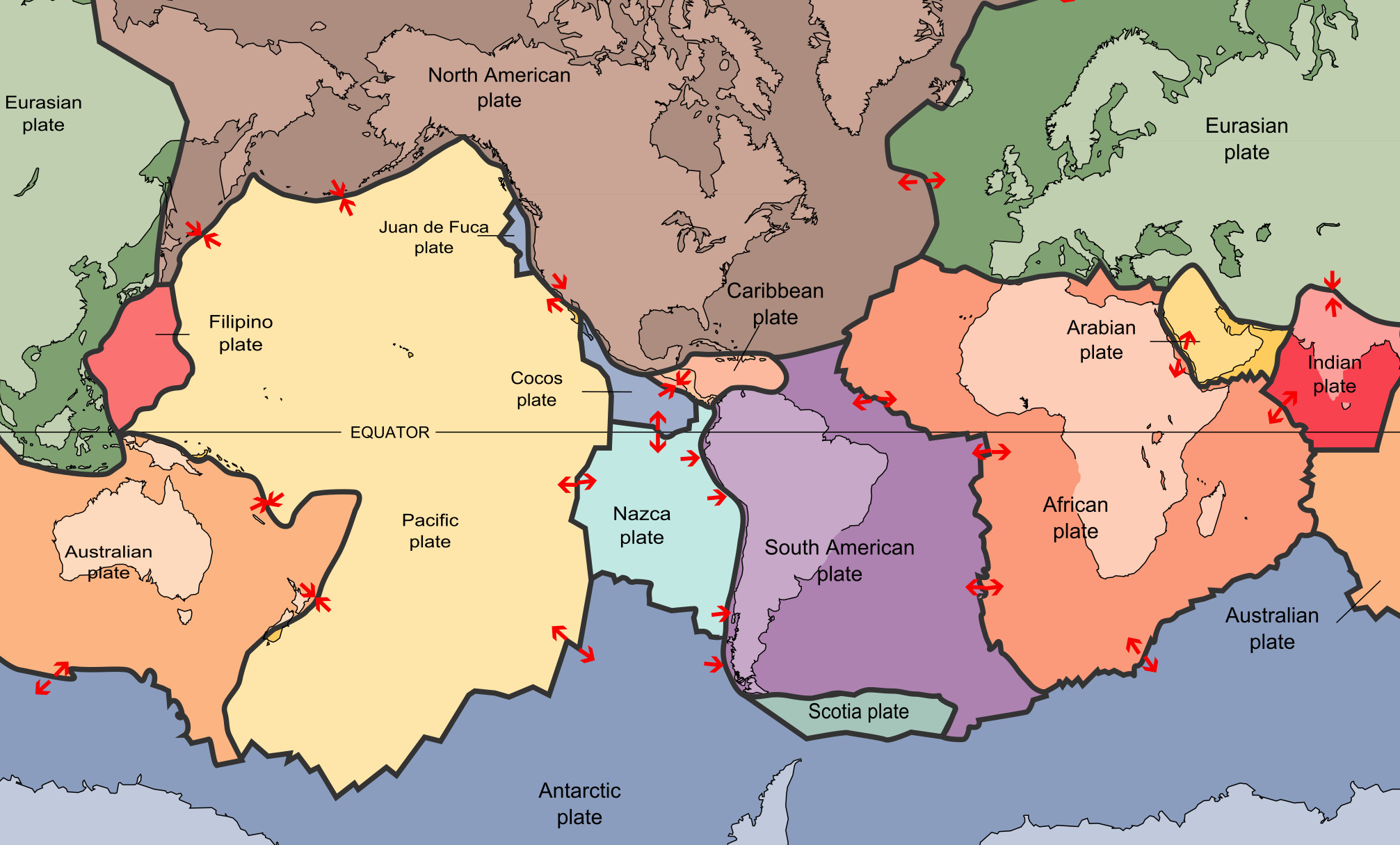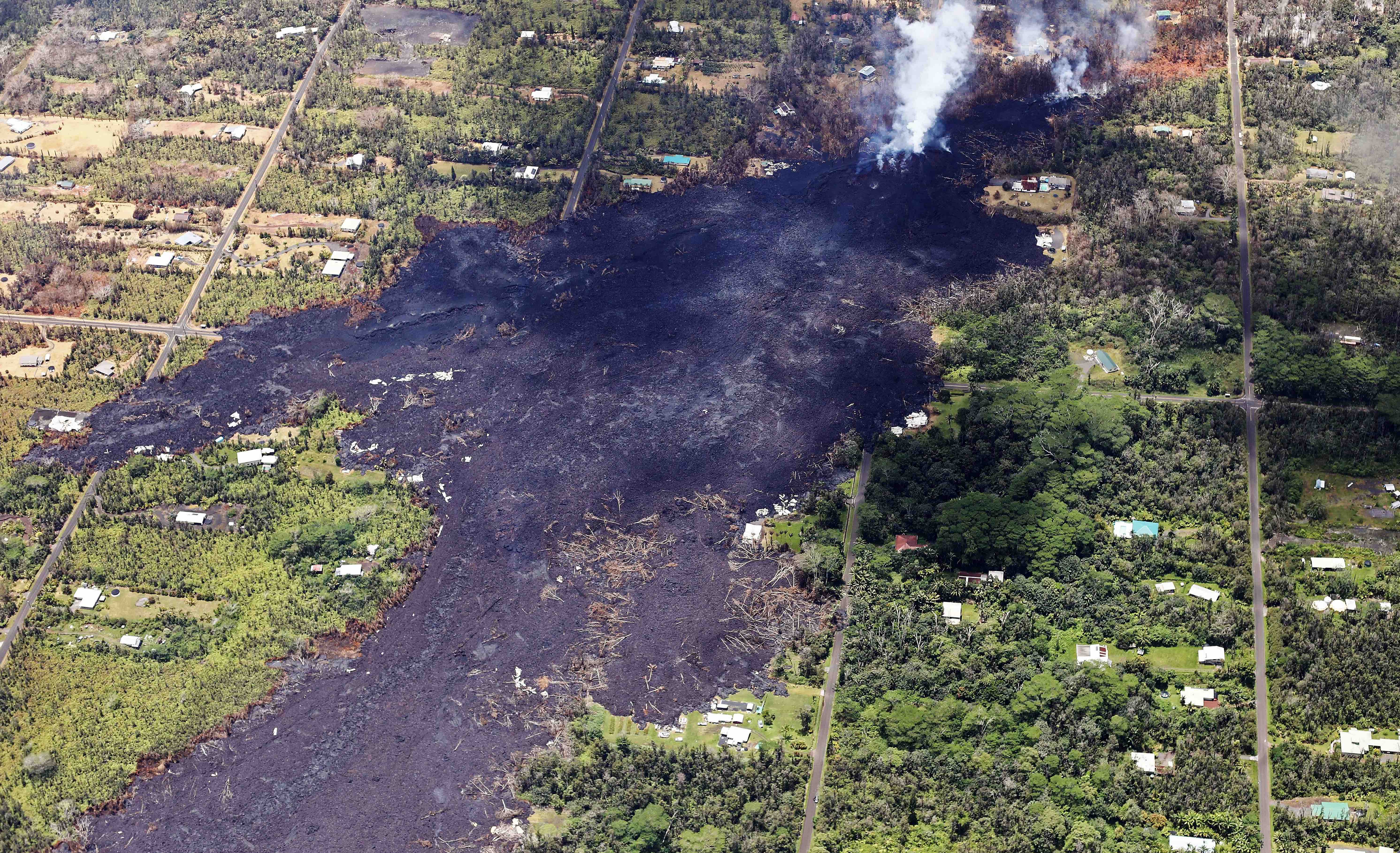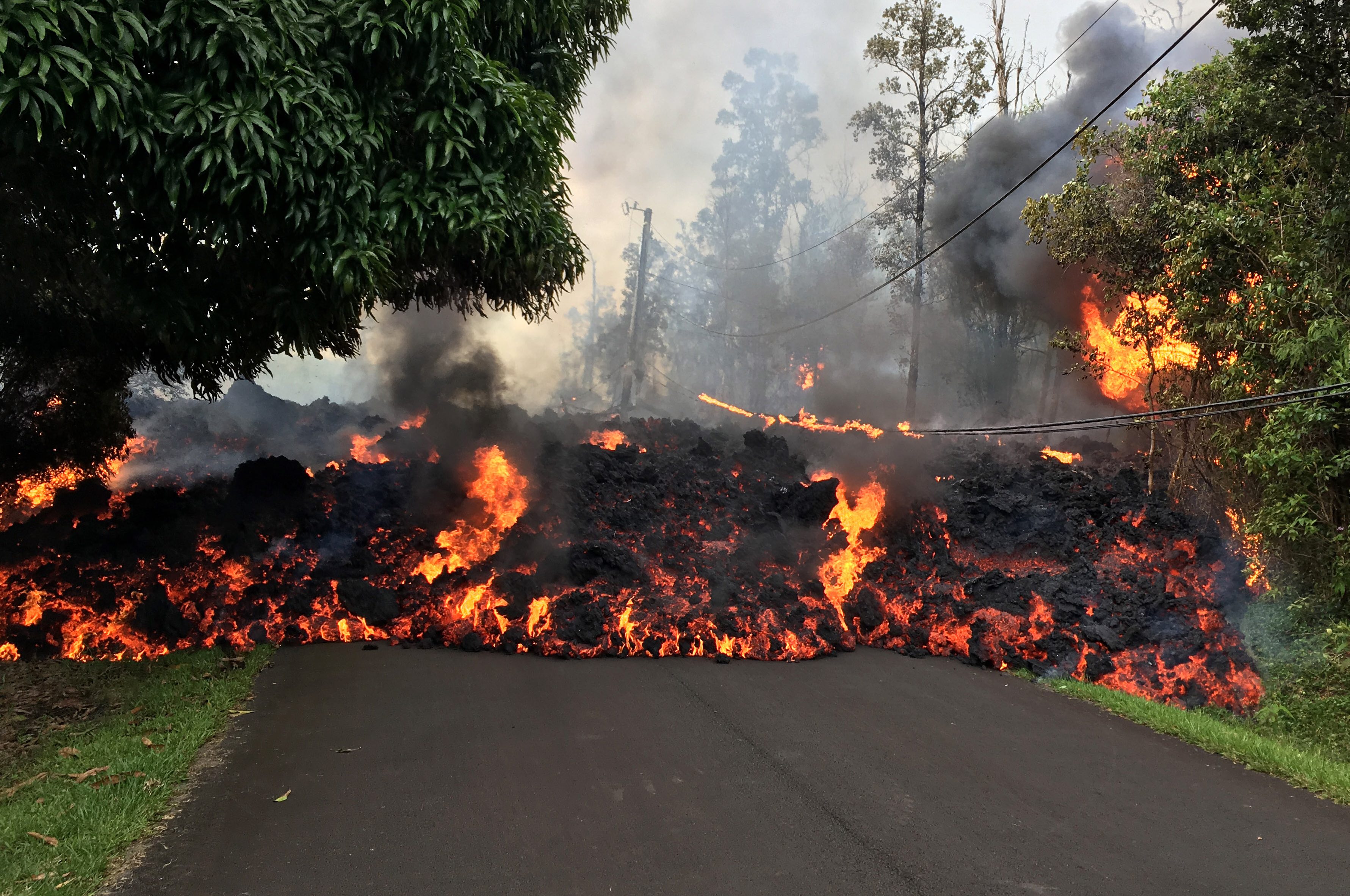
The big picture of the Kilauea eruption

Hawaii’s Kilauea is one of the world’s most active volcanoes - but what does this recent eruption tell us about what’s going on deep underground?
Published 14 May 2018
Earlier this month, Hawaii’s Kilauea volcano erupted dramatically, just hours after a magnitude 5.0 quake struck the Big Island.
Lava flowed into residential areas and Hawaii’s Civil Defense Agency evacuated nearly 2,000 people in the path of both the lava and the fumes.

Now, according to the Hawaiian Volcano Observatory (HVO) two new volcanic vents, or fissures, have opened up bringing the number of lava outbreaks on the volcano’s eastern side to 18.
We asked the University of Melbourne’s Professor Louis Moresi, Chair of Earth Sciences (Geophysics) at the Faculty of Science, to explain what this eruption tells us about what’s happening deep in the Earth’s crust.
How long could the kilauea eruption go on for?
The short answer is ‘it depends’. Volcanic plumbing systems are complex, and the source of magma depends on deep activity below the ground, as well as the lava’s pathway to the surface.
WATCH: How molten lava slowly consumes everything in its path.
— Anaridis Rodriguez (@Anaridis) May 7, 2018
Since THU, 10 of Mt. Kilauea's volcanic fissures have opened & spread lava to
400k sq ft. @USGSVolcanoes says measured advance rates of lava can travel as fast as 5.8mi/HR to as slow as few hundred yds/hr or day. pic.twitter.com/msZ2fXtM0Q
Kilauea is Hawaii’s youngest and most active volcano, and has been erupting on-and-off since 1983. Before it erupted this time, the volcano gave a month of rumbling warnings that suggested there was molten rock moving around underground. Eruptions like this can be quite long-lived, but the filling and draining of the lava lake at the top of the volcano shows how variable the process can be.

Key here is that the HVO saw this coming and their monitoring is pretty reliable. But there is no way to accurately predict exactly how long the eruption could continue – it could be days, weeks or even years.
We hear a lot about the ‘ring of fire’ – what is it and why is it geologically unstable?
The Ring of Fire is a string of volcanoes and areas of seismic activity that sit around the edges of the Pacific Ocean.
It stretches from the southern tip of South America, up the coast of North America, across the Bering Strait, down through Japan, and into New Zealand. The activity is a result of the Earth’s tectonic plates being subducted – this is where one plate moves under another and is forced into the mantle - and recycled.

During this recycling process, the oceanic crust carries hydrated minerals down with it. The water, and other volatile gases, are driven off at relatively high temperatures and pressure – this, in turn, causes what are known as subduction volcanoes on the upper-plate.
These occur in either the continental crust up above or, as is the case in places like Indonesia, Tonga, the Aleutian Islands, and all the little islands in the Izu-Bonin-Mariana chain - on the oceanic crust where volcanoes rise up out of the water.
Now before we feel too safe here in Australia, we’re not so far away from the Ring of Fire and we are more likely to come across subduction volcanoes than any others.

Environment
Creating Pandora on Earth
What does kilauea’s eruption tell us about what’s going on more widely geologically?
Hawaii’s volcanoes aren’t related to subduction. There’s another kind known as ‘hot spots’ which aren’t directly associated with the movement of Earth’s tectonic plates
Hot spots are areas deep within the Earth’s mantle where heat rises up melting rock in the upper portion of the mantle. The melted rock, known as magma, often pushes through cracks in the crust to form volcanoes.
Now, Hawaii is in the middle of the Pacific Plate which is the biggest plate in the Pacific Ocean (the biggest of all, in fact, measuring around 103 million square kilometres). And all these plates are on the move.
You can think of them as blocks of the ocean floor in a giant puzzle. The plates are actually the cold, upper part of giant convection cells that overturn the deep mantle to the surface and drive heat from the Earth’s interior.
The Kilauea volcano is actually a mid-plate volcano and part of a hotspot chain which is a long line of volcanoes marking where the plate runs over the top of the slow-moving hotspot.

Close to Kilauea is Mauna Loa, the largest volcano on the planet, which last erupted in 1984. This volcano has been on yellow alert since September 2015, but it has quieted down a bit.
Hotspot volcanoes are not that explosive as these things go – it’s the volcanoes in subduction zones that are truly explosive, as they have a lot of dissolved gases in the magma which are derived from the subduction of the seafloor.
By contrast, the heat for the hotspots is almost certainly from very deep in the Earth - probably from near the core which sits more than 3000 kilometres down.

Sciences & Technology
Sinkholes: What on earth’s happening?
This core is mostly-iron layer and mostly liquid except for a small, solid inner core. The mantle is the solid layer above the core, and that’s around another 3000 kilometres thick. There is not any magma in ‘normal’ parts of the mantle – only in a few spots like Hawaii, the mid-ocean ridge system, and the melting that occurs at subduction zones.
This volcanic activity is also associated with a lot of earthquake activity, what’s happening underground?
The only earthquakes that are thought to be related to this particular volcanic activity are the ones on the Big Island itself. These are very obviously connected to the draining out of the lava lake at the top of the volcano through underground fissures as it makes its way to the ocean.
There have been some really large events that are unsettling for locals, but the shaking around the other parts of the Pacific is very slight and not likely to trigger any other activity.
What’s the long-term geological impact of an eruption like kilauea?
New islands - as the Pacific Plate continues its slow march North-Westward. These islands will spring up where the underlying ‘mantle plume’ is hitting the plate. Slowly but surely.

There are also other volcanoes around the Big Island’s edges - Mauna Kea, Hualalai, Kohala and Mahukona, which is underwater off the coast. These are shield volcanoes which are big dollops of magma that have accumulated after many, many eruptions.
In Kilauea’s case, the Hawaiian Volcano Observatory has warned that there is the potential for explosive eruptions in the coming weeks. If the lava column drops to the level of groundwater beneath Kilauea’s Caldera, the influx of water into the conduit could cause steam-driven explosions.
But as with many things to do with volcanoes – it’s hard to be certain. The HVO goes on to say that “we cannot say with certainty that explosive activity will occur, how large the explosions could be, or how long such explosive activity could continue”.
Banner: Getty Images
